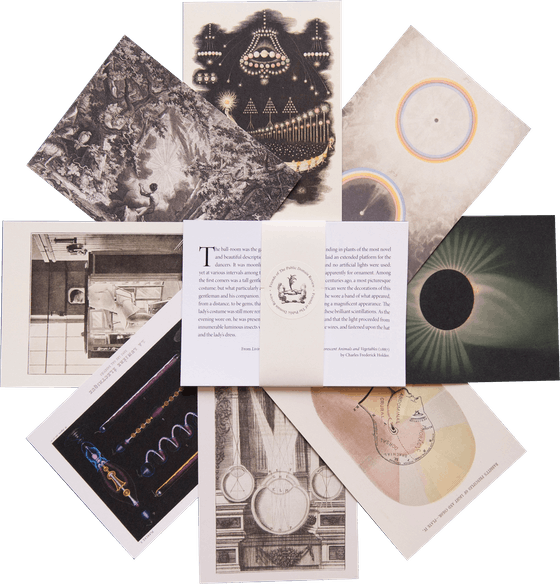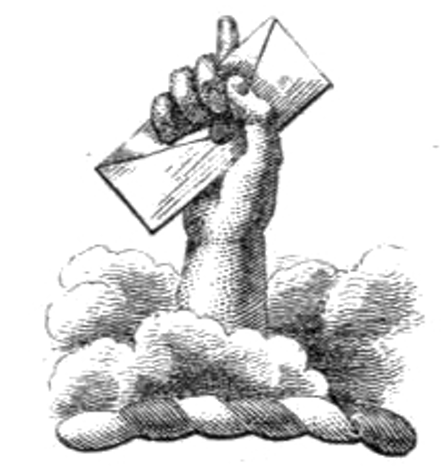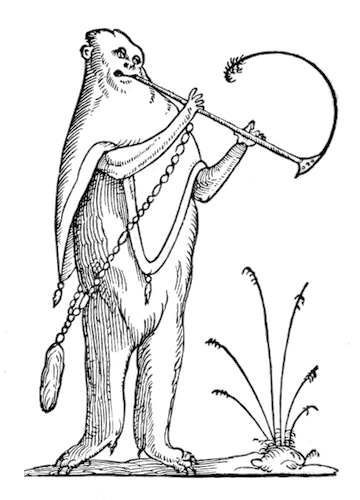
“The Form of a Demon and the Heart of a Person”: Kitagawa Utamaro’s Prints of Yamauba and Kintarō (ca. 1800)
Kitagawa Utamaro, Yamauba and Kintaro, ca. 1800 – Source
Who can say what lay in the heart of the giantess Yamauba when she descended from her mountain crag to claim the boy Kintarō for herself? Some claim that she knew the taste of human flesh; others, that her blood turned the buckwheat fields red. But in the eyes of the Edo period print master Kitagawa Utamaro, she was something else altogether.
As a subject of folklore, as a star of stage dramas, the wilderness-dwelling demoness had long inhabited the outer realms of Japan’s popular imagination. Variations abound: she could curdle day into night, give miraculous birth to a new child every month, and bring storms by virtue of her labor pangs. Yet in early depictions, she is figured as a toothless crone, withered and white haired, the folds of her wrinkled skin and desiccated breasts collapsing into the pile of rags and stitched-together leaves that barely clothe her. It was the great dramatist Zeami, in a Noh play dedicated to Yamauba, who first tempered her wild, bushy-wigged appearance with touches of Zen-infused compunction. His Yamauba is both aware and ashamed of her own alterity and ill repute, pleading with the other characters to relay the truth about her to the world at large. A properly written oni character, as Zeami put it in his dramaturgical treatise The Three Ways (Sandō), should possess “the form of a demon and the heart of a person,” capable of moving “all present to an impression of the wondrous.”
By the time it was Utamaro’s turn to portray Yamauba, she was already far along this transformation from wizened hag into something lovelier and more sympathetic, no longer a remorseless cannibal but an unlikely model of maternal devotion. Yet Utamaro’s series marked the first time this reconceptualization of Yamauba manifested itself in the visual arts. Of murky origins — birthplaces unknown, parentage uncertain — Utamaro would become one of the enduring masters of Japan’s woodblock print tradition. At a time when many artists leant heavily on typified notions of feminine grace, Utamaro made a name for himself by virtue of his refusal of the generic. This boundless curiosity, this impulse to push beyond received modes of depiction, is what accounts for the unique emotive force of his Yamauba and Kintarō images.
Kitagawa Utamaro, Yamauba and Kintarō Playing with a Cherry, ca. 1795 – Source
Utamaro’s rendition both falls in with the broader cultural reconceptualization of Yamauba and transcends it. Across dozens of prints, he imagines her alongside Kintarō, the scarlet-skinned boy-hero who, according to some accounts, was her biological son, and, according to others, an adoptee. In lieu of the dejection that pervades Zeami’s vision of the demoness, what Utamaro offers us is Yamauba as the abiding symbol of parental patience: miming shock when Kintaro disguises himself with a mask, reacting with good humor when he kneads her cheeks or clambers up her back. The portrait format strains to accommodate the pair as they tussle, snuggle, and pull faces at each other in a world that seems to contain only the two of them.
In these prints, little but the untamed eyebrows and shaggy hair — rendered strand by strand in a true carver’s coup de maître — remain to remind viewers of Yamauba’s status as a social outcast. One may well ask, looking at Yamauba’s fine robes and delicate features, what, if any, of her original monstrousness remains. Indeed, some scholars, writing on the series, are content to explain Utamaro’s depiction of a youthful Yamauba as a way of smuggling sensual content under the censor’s nose, pointing to several images where she is shown bare-chested as she breastfeeds her son or attends to her toilet. But these pieces constitute a minority of the series; in any case, exposed breasts are not inherently erotic. What’s more, Utamaro had no problem publishing much more explicit prints during his lifetime, sometimes using aliases that barely differed from his normal nom de pinceau. When the artist did finally run afoul of censorship toward the end of his life, in a much-publicized scandal that led to his brief imprisonment, it was for the political sensitivities of his work, not its salaciousness per se.
What is most lacking in this interpretation, however, is a recognition of the extraordinary sensitivity with which these prints observe the dynamic between the demoness and her son. It is love itself that is monstrous here, love itself that distorts Yamauba’s features into a soot-toothed grin just as she permits her son to contort her flesh with his chubby-fingered hands. It is love that spills uncontrollably over the barriers between one person and another, which has the power to profane the sacred, and which follows its object unbidden, like a curse, even unto the hour of one’s death.
Enjoyed this piece? We need your help to keep publishing.
The PDR is a non-profit project kept alive by reader donations – no ads, no paywalls, just the generosity of our community. It’s a really exciting model, but we need your help to keep it thriving. Visit our support page to become a Friend and receive our themed postcard packs. Or give a one-off donation. Already a supporter? A huge thank you for making all this possible.
Kitagawa Utamaro, Kintarô and Yamauba Kissing, ca. 1800 – Source
Kitagawa Utamaro, Yamauba Blackening her Teeth, with Kintarō, ca. 1795 – Source
Kitagawa Utamaro, Yamauba and Kintaro, ca. 1796 – Source
Kitagawa Utamaro, Yamauba and Kintaro, ca. 1800 – Source
Kitagawa Utamaro, Yamauba Breastfeeding Kintaro, ca. 1800 – Source
Kitagawa Utamaro, Kintaro Grabbing Yamauba's Hair, ca. 1801–1806 – Source
Kitagawa Utamaro, Yamauba holding chestnuts and Kintarō, ca. 1804 – Source
Kitagawa Utamaro, Yamauba Tying Kintarō’s Topknot, ca. 1795 – Source
Kitagawa Utamaro, Yamauba and Kintarō, ca. 1795 – Source
Kitagawa Utamaro, Yamauba and Kintarō Playing with a Cherry, ca. 1795 – Source
Kitagawa Utamaro, Yamauba Combing Her Hair with Kintarō, ca. 1801 – Source
Kitagawa Utamaro, Yamauba Playing with Kintarō, ca. 1795 – Source
Kitagawa Utamaro, Yamauba with Kintarō Holding a toy Mask, ca. 1801 – Source
Kitagawa Utamaro, Yamauba Combing Her Hair with Kintarō, ca. 1801 – Source
Kitagawa Utamaro, Yamauba Playing with Kintarō, ca. 1795 – Source
Apr 3, 2025










